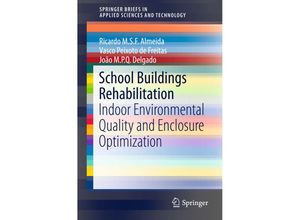This book discusses the effect of different school building rehabilitation strategies on the
classrooms' indoor environmental quality (IEQ) and presents a multi-objective methodology for
school building enclosure optimization combining artificial neural networks and lifecycle
costs. The special features of this book are that it (a) presents the state-of-the-art in
school building rehabilitation (b) covers the IEQ assessment of several school buildings
including non-rehabilitated and rehabilitated according to different strategies and (c)
proposes a multi-objective optimization procedure. The rehabilitation of a school building
should be regarded as a procedure combining a number of (sometimes conflicting) variables and
objectives including energy IEQ and costs (initial operational and maintenance) in the
search for an optimum solution. The main benefit of the book is that it discusses the main
topics related to school building rehabilitation presents results of the IEQ assessment on 9
school buildings and launches a discussion on how the in-use performance of schools is key to
understanding how designed performance is actually experienced. It maps the most commonly used
multi-objective algorithms and artificial neural network architectures and proposes a
methodology for combining these numerical tools with dynamic building simulations and lifecycle
cost analysis to optimize school building enclosures. This methodology will be of value to
scientists and engineers alike while also addressing a variety of related disciplines such as
civil and mechanical engineering architecture and mathematics.

